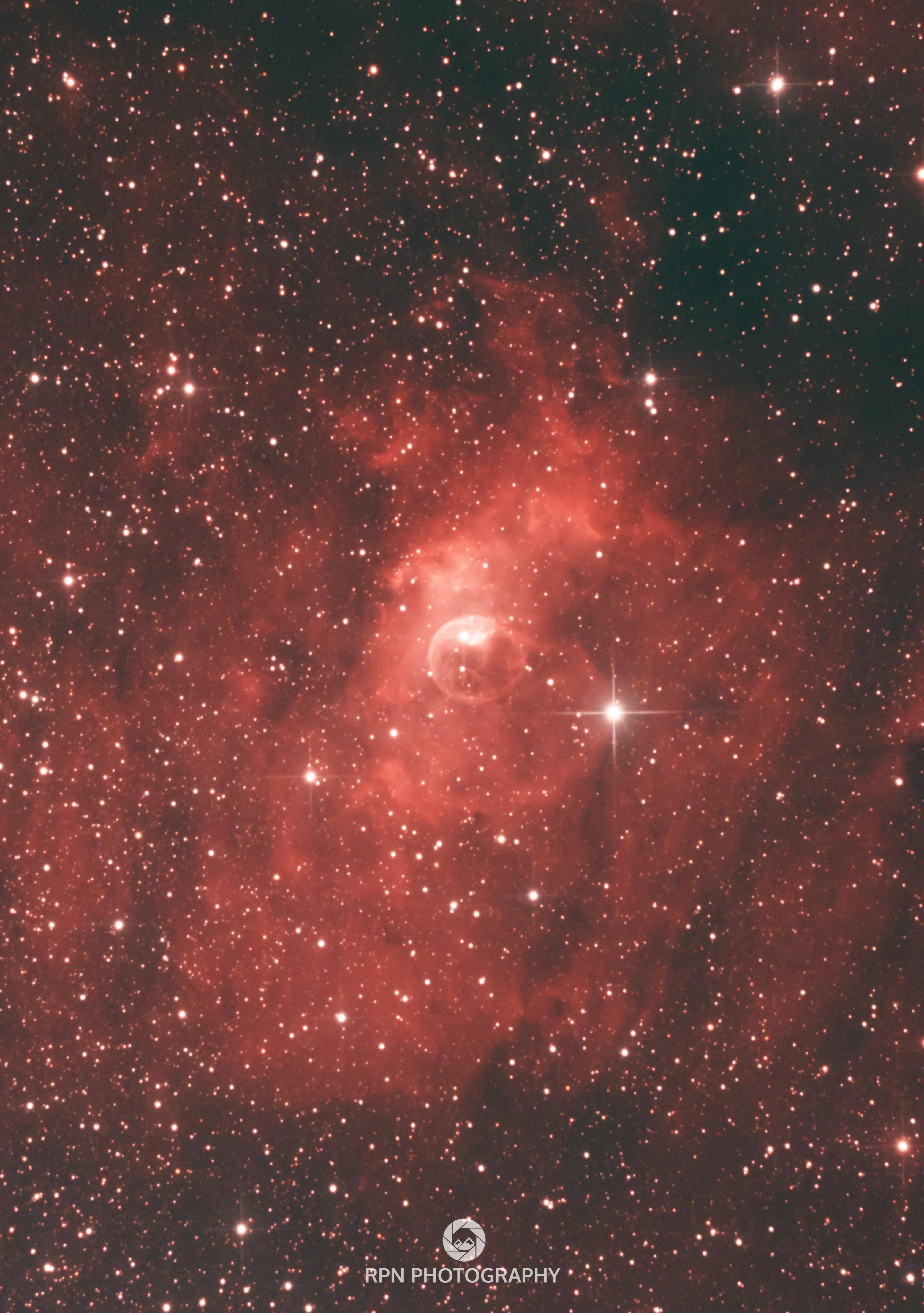
3 minute read
Night Sky
NIGHT SKY THIS MONTH
by Rob Nolan Stuck in a Bubble Find RPN Photography on Facebook here
As it starts to get colder and autumn sets in, we astrophotographers get ready to embrace the damp dark nights and the prospect of being sat outside - shivering - whilst others are cozy by the roaring fire!
The targets that got me hooked on this hobby are also now just starting to reappear in the night sky; the Rosette Nebula, the Horsehead and flame, and the instantly recognisable Orion Nebula also make themselves visible. I shall be waiting excitedly, with greater knowledge and gear than last year, to hopefully obtain better images!
The image this month is of the Bubble Nebula (NGC 7635).
The Bubble is created by the stellar wind from a massive, hot, 8.7 magnitude young central star, named SAO 20575. The nebula is near a giant molecular cloud which contains the expansion of the bubble nebula, while itself being excited by the hot central star, causing it to glow. What I find incredible about photographing these different objects is that they are all so completely and wildly unique, even the elements that make them. I find it so completely fascinating. This image was taken using a Skywatcher 200 PDS Newtonian Reflector Telescope and dedicated Cooled Astro Camera with around 6 hours of total integration time during September.
The Night Sky, November - what to see this month:
I really enjoy this time of year and the celestial events on display, including an abundance of meteor showers and great views of the Milky Way as it continues to dominate the clear crisp skies throughout November, even though the galactic core is no longer visible. Grab a set of binoculars or a small telescope and take a look at the distant clusters of stars and fuzzy gases that make up our cosmic backyard.
Perseus
It’s also a great time to view Perseus, one of the most beloved constellations in the northern skies, packed with celestial gems to observe. Legend has it that Perseus slew Medusa, the Gorgon. The brightest star in the constellation is Mirfak (‘elbow’ in Arabic) - it is 510 light years away and 5,000 times more bright than our own sun.
Uranus
If you find yourself in a dark sky location on a clear night, you may stand a chance of spotting Uranus, the most distant planet we can observe with the unaided eye; it just so happens to appear closest to Earth on the 5th November (remember remember!). Uranus was first discovered by William Herschel in 1781. Discovering this planet doubled the size of our known solar system at the time. At four times the diameter of Earth, with 27 moons, faint narrow rings and seemingly orbiting the sun on its side, Uranus is a rather interesting planet.
Planet watching
On the 7th November, you’ll see the narrow crescent Moon to the right of Venus - look low in the south west at twilight. Mercury passes Mars in the dawn twilight on the 10th November at 6:30am. Planet watchers can also observe the Moon below Saturn, with Jupiter to the left earlier in the night.
Meteor shower
The 17th and 18th November sees the peak of the annual Leonid meteor shower. Sadly though, a nearly full moon will make this spectacle less impressive this year. Look to the constellation Leo in the south eastern skies to see the meteors left in the wake of Comet Tempel-Tuttle.
Beware! Shopping tip for those considering a gift of a telescope:
As Christmas fast approaches, you may be tempted to buy a telescope for a loved one to start them off on their own amazing astronomy journey. Beware! Sellers on many selling platforms will often advertise small unbranded telescopes that boast huge magnification potentials. These telescopes blow up an image to magnifications that the lens or mirror simply doesn’t have the ability to resolve, so all you will see is a bigger disappointing blur. This, sadly, is where many start and end their astronomy journey due to unrealistic expectation of cheaper unbranded telescopes. The maximum magnification a telescope can actually provide is twice the diameter of the lens or mirror in millimeters. So if a seller is advertising a 75mm diameter telescope, beware of claims of a magnification greater than 150 times. Do speak to a local authorised Astronomy dealer for the right equipment. Happy shopping!










